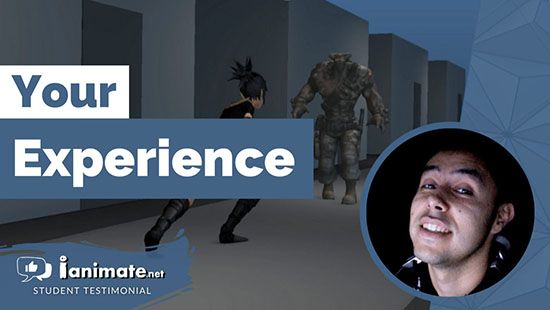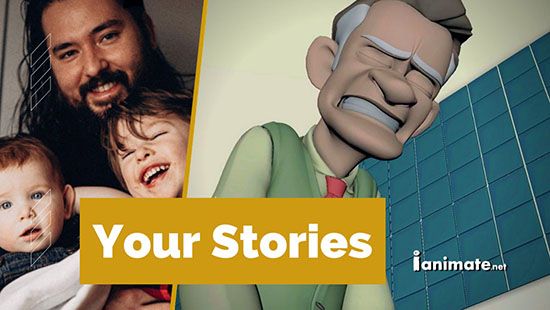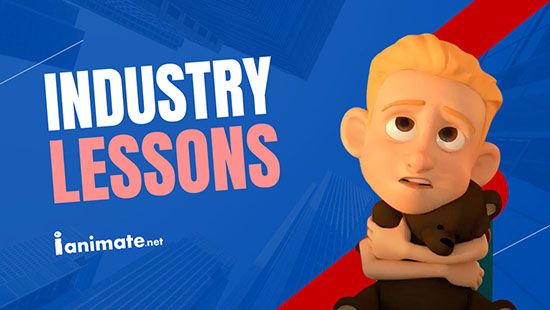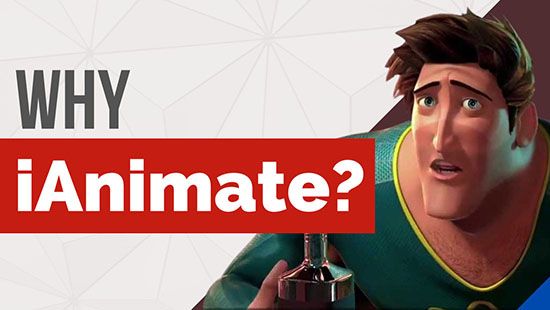Preparation in Animation: Career Path Tips After High School
Article by Richard Arroyo & iAnimate Team
We've seen firsthand how crucial preparation in animation is for aspiring artists. The foundation you build during your high school years can make all the difference when you're trying to break into this competitive industry. From mastering the fundamentals to building a killer portfolio, every step you take now is an investment in your future career.
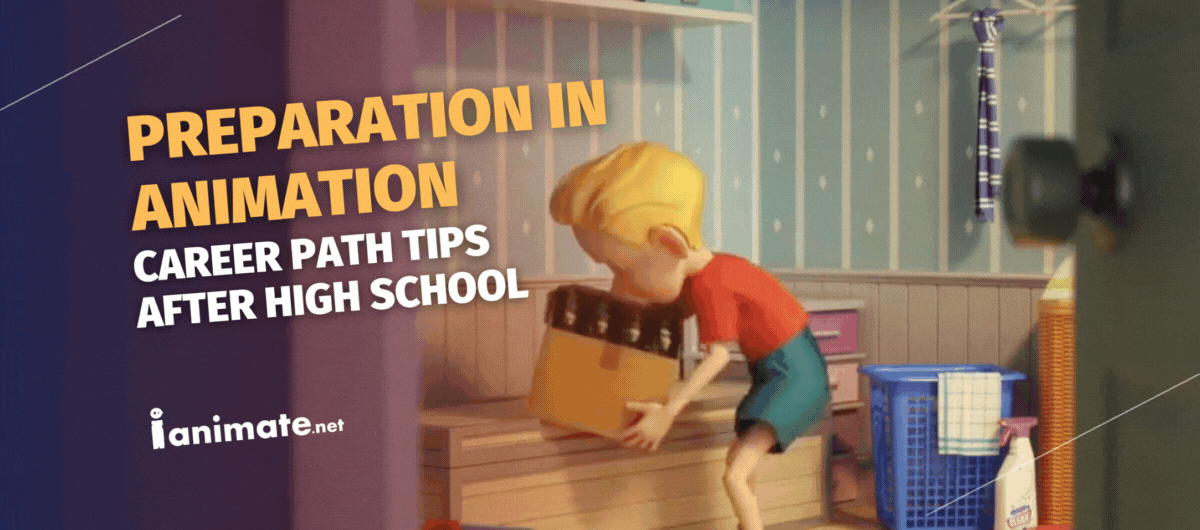
Master the Fundamentals of Animation
Hey there, future animators! Wondering where to start on this wild animation journey? Let's chat about mastering the basics. First things first: preparation in animation is key. Trust me, We've been there.
Remember when you first picked up a pencil? It's kinda like that, but way cooler. Basic principles are your best friends here. Think of them as the secret sauce in your animation recipe.
- Timing: It's all about the "when" in animation. Too fast, too slow? Get it just right.
- Spacing: This is how you make things move smoothly or snappy. Play around with it!
- Movement: Make your characters come alive. Think about how they'd move.
Now, about drawing skills. I know, I know. "But, I can't even draw a straight line!" Here's a little secret: neither can I. But that's not what matters. What counts is practice, practice, practice.
- Grab a sketchbook. Seriously, it's like a gym for your drawing muscles.
- Draw everything. That weird-looking dog at the park? Sketch it!
- Life drawing classes? A gold mine for animators.
Remember, every pro animator started somewhere. Even at studios, they all began with stick figures. The cool thing about animation prep? It's a journey, not a race.
So, dive in. Play around. Make mistakes. That's how you learn and grow. And hey, if you're looking for some structured learning, check out iAnimate. We've got some great courses to get you started.
Keep at it, and before you know it, you'll be bringing your characters to life!
Build a Strong Portfolio
Alright, let's talk portfolios. You're probably thinking, "Do I need one in high school?" Trust me, it's never too early to start. A strong portfolio is like your animation calling card. It's a big part of preparation in animation.
So, how do you build one that rocks? Let's break it down. First up: Create diverse work.
Think of your portfolio like a buffet. You want a little bit of everything:
- Character designs: Show off your creativity
- Storyboards: Prove you can tell a story
- Short animations: Even a 5-second loop can impress
Remember, quality beats quantity every time. One killer piece is worth more than ten so-so ones. Now, here's the secret sauce: Keep it fresh! Regularly updating your portfolio is key. It's like feeding a pet - you gotta do it often.
- Set a schedule: Maybe add something new every month
- Replace old stuff: As you improve, swap out weaker pieces
- Show your progress: It's cool to see how far you've come
I remember when I was starting. My first portfolio was... well, let's just say it wasn't Ubisoft material. But I kept at it. Every new piece was a little better than the last. That's the beauty of animation - you're always learning, always improving. And hey, if you're looking for inspiration, check out iAnimate. They've got some great examples of student work.
The most important thing? Just start. Your portfolio is like a plant - it needs time to grow. So get creative, keep updating, and watch your animation skills bloom!
Explore Different Techniques and Tools
Ever feel like you're stuck in a rut with your animation style? Don't worry, it happens to all of us. Let's talk about mixing things up and exploring new territory. Preparation in animation isn't just about mastering one style. It's about being versatile.
First off, let's chat about experimenting with different styles:
- 2D animation: The classic. Think Disney's early days.
- 3D animation: This is what studios do a lot.
- Stop-motion: It's like playing with toys, but cooler.
- Motion graphics: Great for adding pizzazz to text and logos.
Try them all! You might surprise yourself with what clicks. Now, let's talk software. I know, I know. It can be overwhelming. But here's the thing: knowing your tools is a big part of animation prep.
Some popular ones to check out:
- Adobe After Effects: Great for 2D animation and motion graphics
- Autodesk Maya: This is a 3D powerhouse
- Blender: It's free and super versatile
Don't feel like you need to master them all at once. Pick one and dive in. Most of these have free trials or student versions. Take advantage of that! And if you're feeling lost, iAnimate has some great courses on different software and techniques.
The cool thing about exploring different styles and tools? It helps you find your animation voice. Maybe you'll fall in love with stop-motion. Or discover you're a 3D wizard. You won't know until you try. So go on, get experimenting!
Pursue Relevant Education
Feeling a bit lost about what to do after high school? Let's chat about education in the animation world. Preparation in animation isn't just about drawing skills. It's also about learning and growing.
First up: researching animation schools. It's like shopping for the perfect pair of shoes. Here's what to look for:
- Curriculum: Does it cover the stuff you want to learn?
- Faculty: Are they industry pros?
- Alumni success: Where are graduates working now?
Don't just look at the big-name schools. Sometimes smaller programs can be hidden gems. Taking the time to find the right fit was so worth it. Now, let's talk about workshops and summer courses. These are like animation boot camps.
They're great for:
- Getting a taste of different animation styles
- Meeting other animation nerds (in a good way!)
- Learning from pros in a short time
If you're not sure where to start, check out iAnimate. We offer some cool online workshops. Remember, education in animation is ongoing. Even now, I'm always learning new things. So don't stress if you don't have it all figured out yet. Just start exploring and see where it takes you. Who knows? Maybe one day we'll be working together on the next big game!
Engage with the Animation Community
Ever feel like you're on an island, trying to figure out this animation thing all alone? Trust me, you're not. And you shouldn't be. Engaging with the animation community is a huge part of the preparation for animation. Let's talk about two big ways to do this: finding mentors and networking with peers. First up: mentorship. It's like having a tour guide in the animation world.
A good mentor can:
- Give you insider tips
- Help you avoid common mistakes
- Introduce you to industry folks
Now, how do you find a mentor? It's easier than you might think:
- Reach out to animators you admire on social media
- Join animation forums and engage with experienced members
- Attend industry events (even virtual ones count!)
Next, let's chat about networking with peers. This is like finding your animation tribe.
Why is it important?
- You can share tips and tricks
- It's great for motivation when you're stuck
- Your peers today might be your coworkers tomorrow
Some cool places to connect with other aspiring animators:
- ArtStation
- Behance
- Animation-focused Discord servers
And don't forget about iAnimate. Our courses are great for meeting other animation enthusiasts. Remember, the animation community is pretty friendly. We all started somewhere, and most of us love helping newbies. So don't be shy. Reach out, make connections, and watch your animation world grow!
FAQs (Frequently Asked Questions)
Q1: How can I start preparing for a career in animation while still in high school?
A: Start by mastering the fundamentals of animation, including drawing skills and basic principles like timing and spacing. Build a diverse portfolio, experiment with different animation styles and software, and engage with the animation community through online platforms and local events.
Q2: What should I include in my animation portfolio?
A: Your portfolio should showcase a variety of work, including character designs, storyboards, and short animations. Focus on quality over quantity, and regularly update it with your best and most recent work. Include pieces that demonstrate your understanding of animation principles and your unique style.
Q3: Which animation software should I learn first?
A: While there are many options, industry-standard software like Adobe After Effects for 2D animation and motion graphics, or Autodesk Maya for 3D animation are good starting points. Blender is a free, versatile option that's great for beginners. Choose one to start with and focus on mastering its basic functions before moving on to others.
Q4: Do I need to go to a specialized animation school to have a successful career?
A: While formal education can be beneficial, it's not always necessary. What's most important is developing your skills, building a strong portfolio, and networking within the industry. Consider researching animation programs, but also look into online courses, workshops, and self-study options to find what works best for you.
Q5: How can I connect with other animators and find a mentor?
A: Engage with the animation community through online platforms like ArtStation, Behance, and animation-focused forums or Discord servers. Attend industry events, workshops, or conferences (even virtual ones) to meet professionals. Don't be afraid to reach out to animators you admire on social media or through their websites to ask for advice or mentorship.

